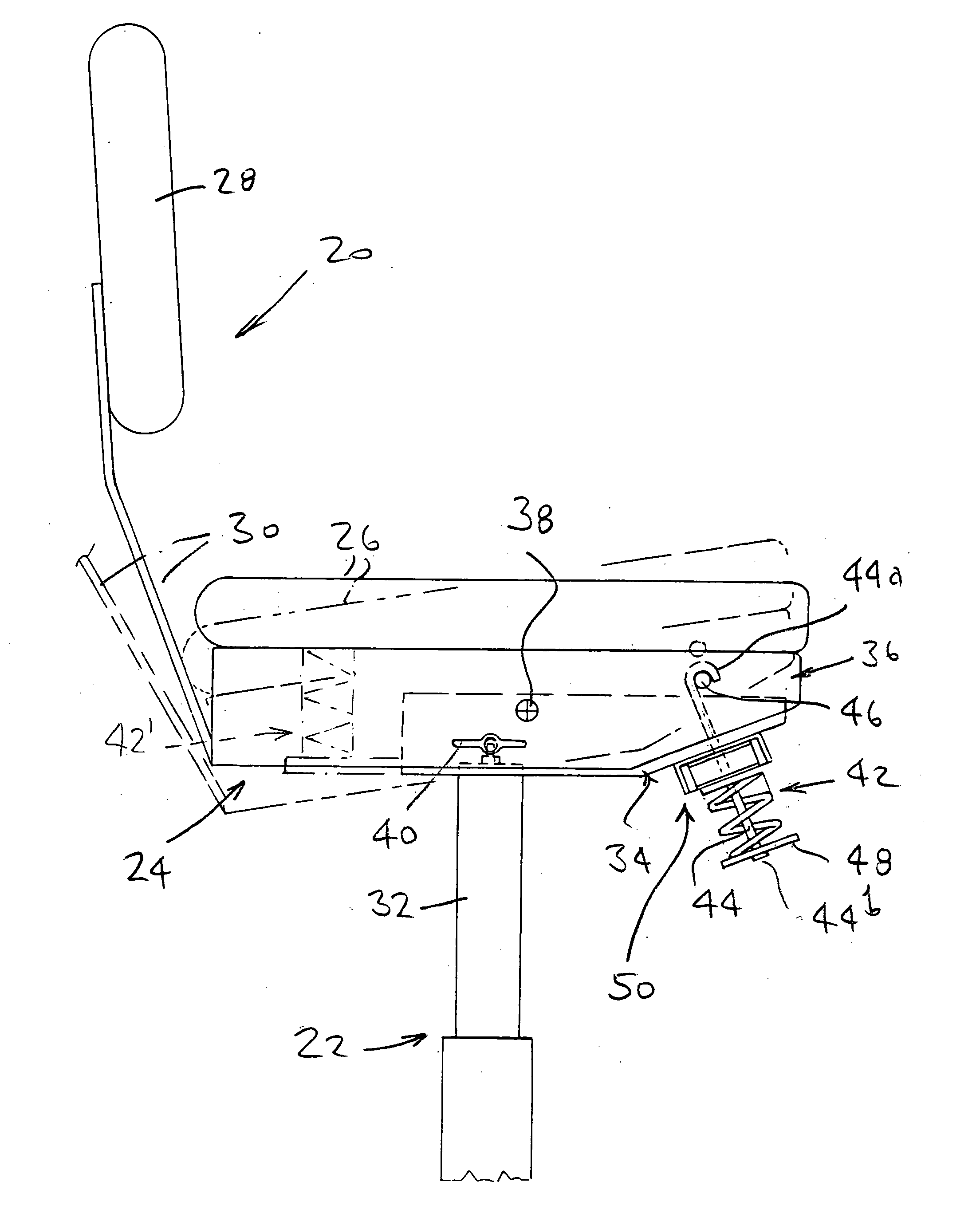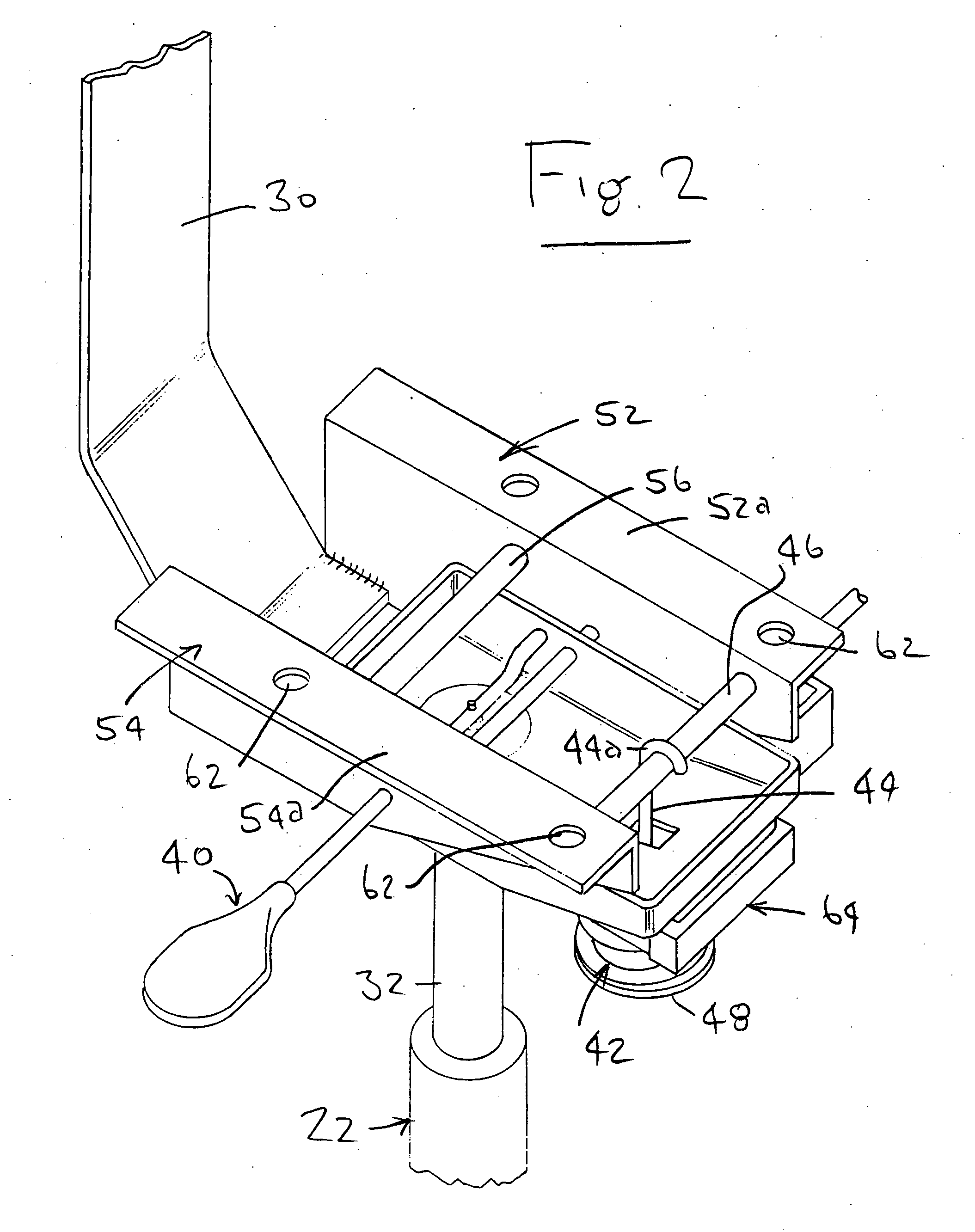Chair spring tension control
a tension control and chair technology, applied in the direction of seating furniture, vehicle seats, transportation and packaging, etc., can solve the problem of some awkward us
- Summary
- Abstract
- Description
- Claims
- Application Information
AI Technical Summary
Benefits of technology
Problems solved by technology
Method used
Image
Examples
Embodiment Construction
[0016] Referring first to FIG. 1, a typical office chair is seen to comprise a seat / back assembly 20 which is coupled to a chair base 22 by a mechanism 24 which allows controlled tilting of the seat / back assembly with respect to the base. The mechanism is shown in full lines in a normal rest position in which the seat (26) is generally horizontal, and in ghost outline in a tilted back position in which the seat 26 is rearwardly inclined, also as shown in ghost outline. The back 28 is connected to the tilt mechanism by an arm 30 (also seen in FIG. 2) so that the back also tilts. In this embodiment, the orientation of the seat 26 and back 28 with respect to one another is fixed, although the tilt mechanism can be designed to allow tilting movement of the back with respect to the seat, as is well known in the art.
[0017] The chair base is essentially conventional and in this case includes a telescopic upright column 32 that carries the tilt mechanism 24. Mechanism 24 has a fixed lower ...
PUM
 Login to View More
Login to View More Abstract
Description
Claims
Application Information
 Login to View More
Login to View More - R&D
- Intellectual Property
- Life Sciences
- Materials
- Tech Scout
- Unparalleled Data Quality
- Higher Quality Content
- 60% Fewer Hallucinations
Browse by: Latest US Patents, China's latest patents, Technical Efficacy Thesaurus, Application Domain, Technology Topic, Popular Technical Reports.
© 2025 PatSnap. All rights reserved.Legal|Privacy policy|Modern Slavery Act Transparency Statement|Sitemap|About US| Contact US: help@patsnap.com



